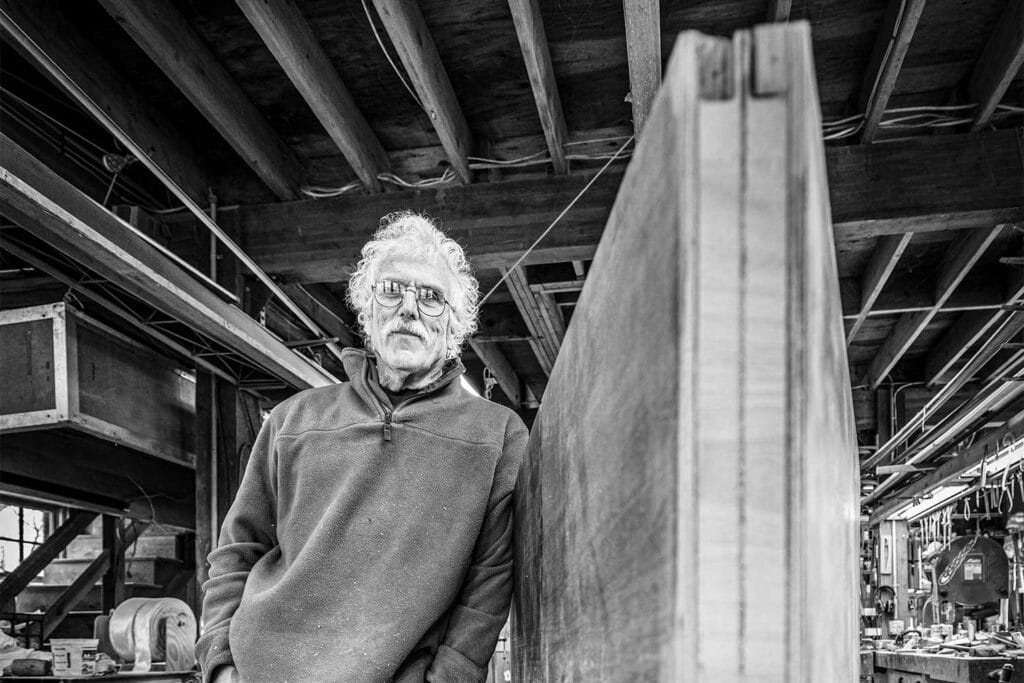
There must be something in the soil at Point Farm in Warren, Rhode Island. On this land, Steve Clark has reaped everything from traditional dories to C-class catamarans to International Canoes, and all sorts of genetically modified vessels in between. His latest crop is a brand-new International 110 crafted from sheets of mere marine plywood.
Members of the International 110 class talked about the creation of a kit boat for decades. When Clark rejoined the class, the dream became reality in short order. As the previous co-owner of Vanguard Sailboats, Clark was accustomed to building 3,000 sailboats per year. In the glory days, it took his firm about 18 hours to build a Sunfish.
Why is he putting his time and talent into building a kit for a one-design first built in 1939? With a mischievous grin, Clark says: “It’s the same reason why a dog licks his balls. Because he can.”
At the age of 69, Clark is retired and still enjoys boatbuilding. He came back to the 110 because he saw it as a “geezer Canoe.”
“My competitive days in International Canoes are fewer than they used to be,” he says. “And I also wanted to be able to sail PHRF on Wednesday nights and navigation races. The 110 qualifies.”
Clark views the International 110 class as his client, and his goal is to build a quality boat that is as fast but not faster than existing boats. The first question he had to answer was what shape to make the kit boat? Clark brought in Casey Brown, who was a collaborator on previous projects, and they scanned a fiberglass International 110 built by Westease in Holland, Michigan. “The 3D scanning is remarkable,” Clark says. “Kasey set it up. The thing bounces light off the boat. We get a raw scan, then we run it through a fairing program on the computer.”
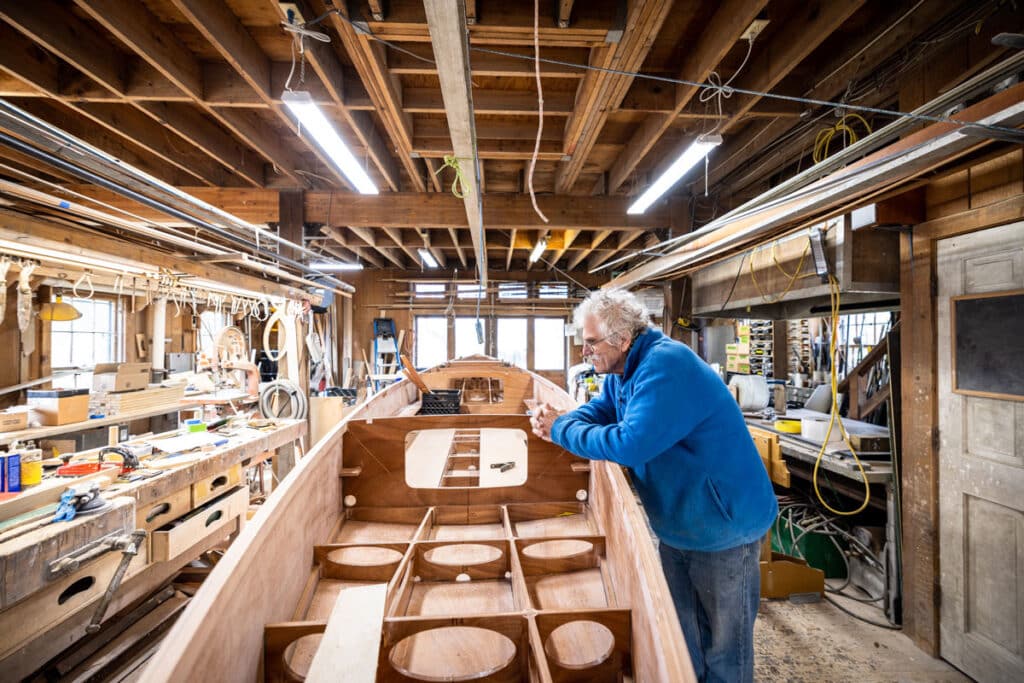
After the shape was approved by the 110 class technical chair, Clark worked on how to build the inside of the boat, spending a lot of time creating different layouts on the computer. Along the way, there were numerous obstacles to overcome. One of them was when Clark had a heart attack in June 2022. Another was the chine log. The original wooden 110s had a complicated chine that came out of a shaper. Back in the day, the builders had a large industrial machine to shape the chine. They also had a seemingly endless supply of 25-foot-long pieces of clear Douglas fir. Neither the shaper nor the stock is available.
Clark solved this challenge by treating the chine more like a stitch and glue boat. He covered the edge of the boat with a small chine, then carved a radius into it using a power plane. “It’s the same technique you use for making a round mast. You start off with a square, you cut 45-degree corners, and you sequentially facet the radius. After you’ve done that twice, you are within sandpaper of the right radius.”
Clark went through eight or nine iterations of the construction design until he was happy with the layouts. The files were prepared to be cut on a CNC machine. In the past, Clark has done the same thing with sailing canoes, noting that it is easier to ship files than big, bulky molds. “I’ve had guys in Australia build boats that I designed,” he says. “I send them a compressed file, and away it goes.”
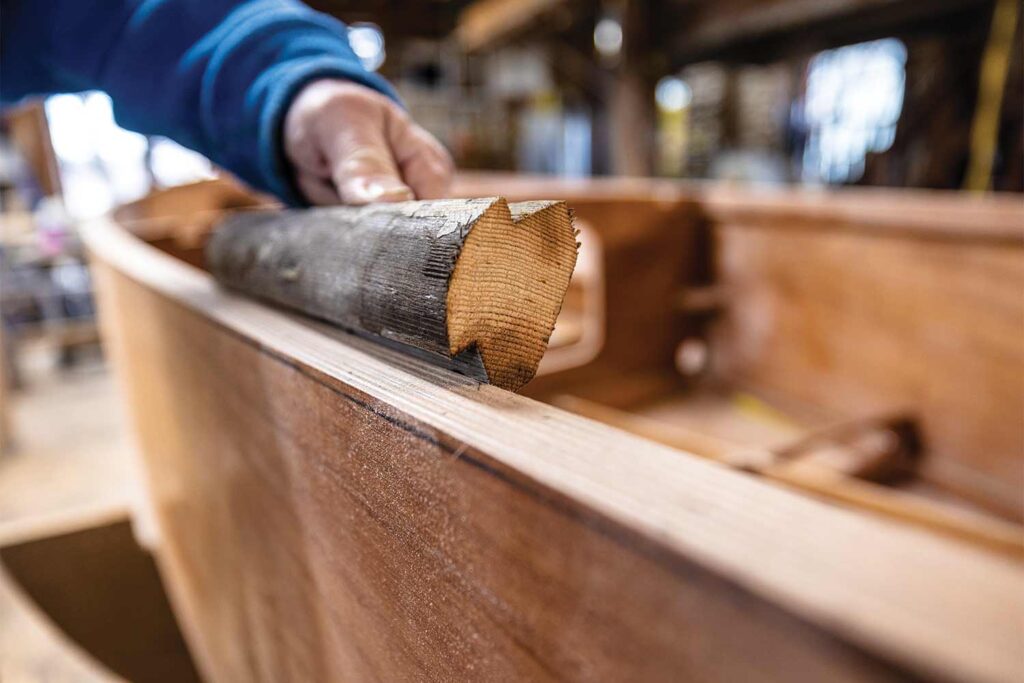
Chesapeake Light Craft cut all of the plywood to build the hull and delivered it in a flat pack for $5,600. Clark sees this technology as a game-changer. “It used to be you had to draw the boat full size on the floor, correct all the shapes. That was a week or two of lofting. Now you can do it all in computers, get the parts cut accurately, then set them up and go.”
With the assistance of fellow boatbuilder Bro Dunn, Clark believes his kit-boat International 110 will be completed by May and racing this summer. The response to the project has been positive, with many of the faithful making the pilgrimage to Clark’s barn and laying hands upon the boat. “People are excited to see a new 110 take shape. The 110 class has a large alumnae,” Clark says. “There’s a great deal of nostalgia.”
But he’s not just looking back. He has a plan for the future. Out back, Clark has seven vintage wooden 110s that could use some love. He hopes to create a program with the nearby Herreshoff Museum such that teenagers and young adults can get a boat, learn how to take care of it, then go out sailing. The talks with the museum have been positive, and there are still details to be finalized.
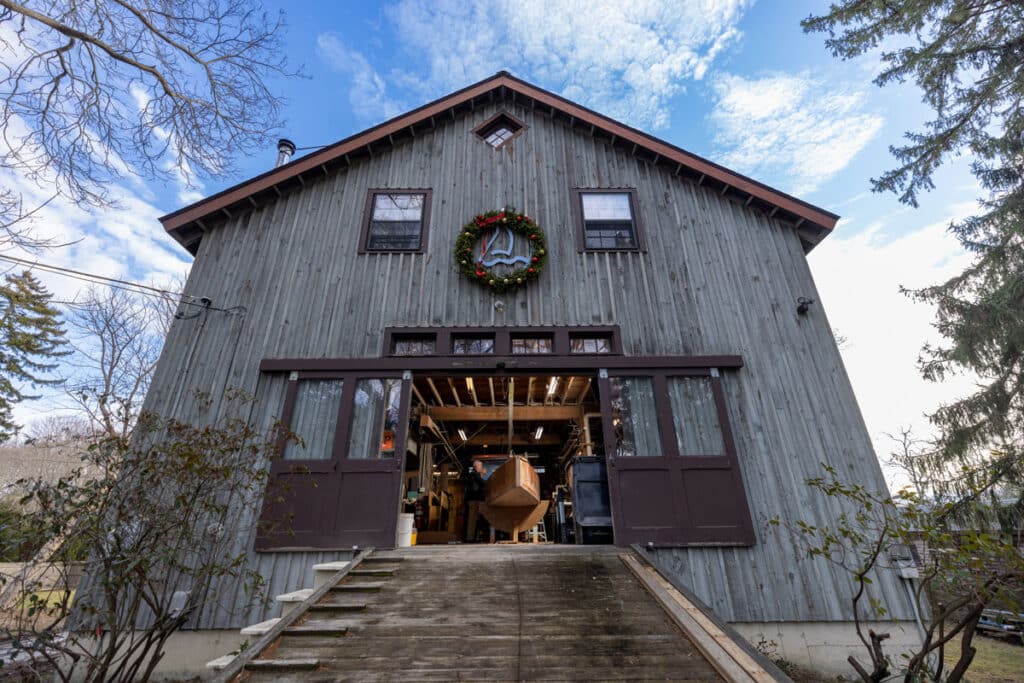
On Bainbridge Island, 3,000 miles away just west of Seattle, Fleet 19 is building a prototype 110 from a kit it developed independently of the Clark project. Its approach to 110 construction uses a combination of fiberglass-covered foam and marine plywood. Brandon Davis of Turn Point Design in Port Townsend, Washington, is deeply involved in the project. He knows his way around a build. He has worked on four America’s Cup campaigns, aerospace projects, rockets, satellites, submarines, flying cars and small-boat kits.
“The 110 has traditionally been built with a tortured plywood bottom and deck,” Davis says. “To spring the shape into the 3/8-inch plywood took quite a bit of force, requiring strong internal frames, 12 big trucker ratchet straps, boxes of screws and lots of persistence.”
To simplify the build, the Fleet 19 team chose a 100 percent recycled PET foam core because it was easier to shape. That decision meant there needed to be less internal structure, which resulted in a quicker build.
There were ease of ownership considerations as well. “Most trailerable boats sit in the backyard over the winter and, if they are not tarped perfectly, will gather rainwater in their bilge. That can spell the untimely end to a plywood boat. With a foam-core International 110, you will not have to worry so much about rainwater,” Davis says.
The Seattle team’s plan is to have the first hull ready, which is already built and certified by the class measurer. They’re keen to rig it and do some testing to make sure their boat is not “unfairly fast.”
Like Clark, the Seattle-area 110 sailors are drawn to the International 110 because of its simplicity. Many of them are coming from the 6 Meter yachts, which are substantially more complex and expensive than Ray Hunt’s venerable design.
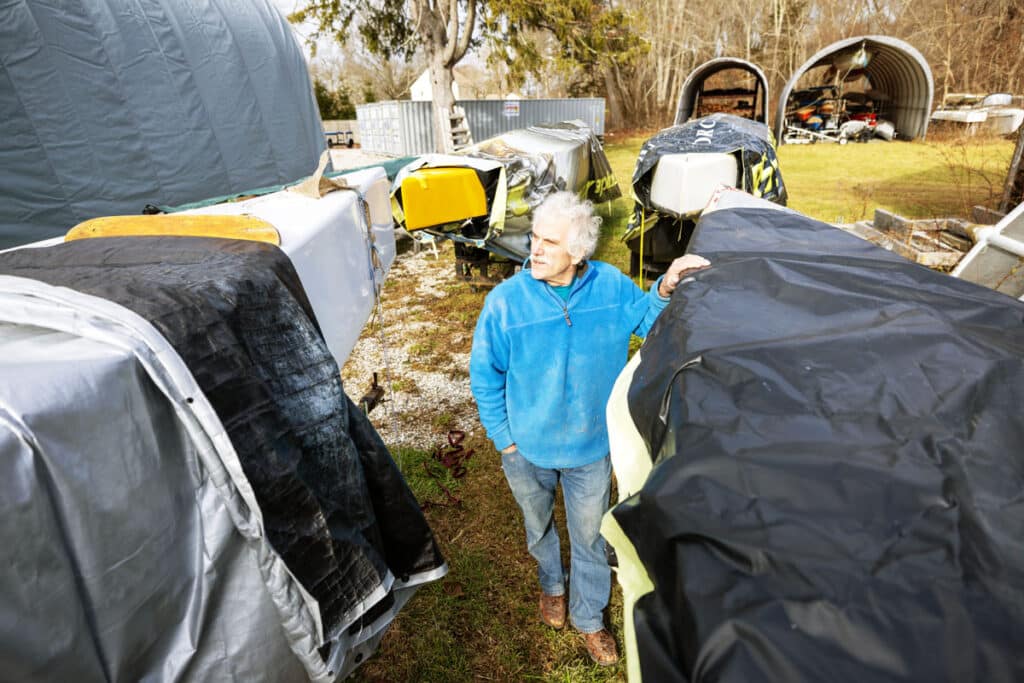
Milly Biller is the president of the 110 class, and she has rebuilt at least a dozen vintage 110s for her Inverness, California, fleet. She’s running out of old boats to repair, so she is thrilled to have new options for new sailors all over the country.









